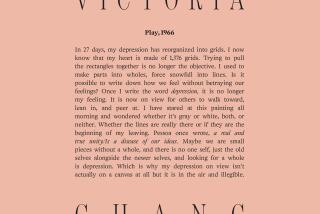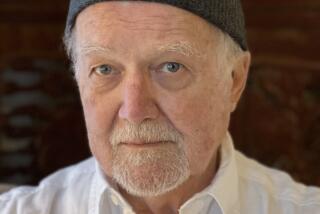Brenda Hillman’s ‘Extra Hidden Life, Among the Days’ ponders how poetry can help us chronicle, engage, grieve
How can poetry help us cope with the Trump era? Or, as Brenda Hillman asks, “What do people need from poetry during these changes?” “Extra Hidden Life, Among the Days,” Hillman’s 10th collection and a work largely concerned with grief, is one uneasy answer. These poems propose that what art can give us, amid public turmoil that, for many, feels poignantly personal, is a communal forum to air our innermost feelings, a force to steady us against torrents of tweets and headlines, and an intimate megaphone to amplify our anger and pain. “We don’t read recipes at the graves/ We don’t read tracts & theories at the graves,” writes Hillman — we read poetry.
This collection is a sort of sequel or adjunct to Hillman’s elemental quartet, each of which took its inspiration from one of the four classical elements: earth, air, water and fire. The last, “Seasonal Works With Letters on Fire” (2013), was a fierce work of political protest. The new book, which meditates on the life in the margins of the other elements — trees, lichen, bacteria — partly feels like a response to the last years’ headlines and Trump’s executive orders scaling back environmental protections. Hillman laments America’s threatened forests and seashores (while also soberly celebrating them), as well as “the full-of-plastic Pacific.” The hope that Hillman musters comes from particular people and communities, and from the enduring and cyclical powers of nature, not from political leaders: “it’s too late for countries/ but it’s not too late for trees.”
Hillman goes for capacious inclusion and improvisation rather than poignant moments of lyric clarity. She tries to get everything in, reenacting her consciousness on the page. The opening series of short lyrics followed by a poetic journal can feel diffuse and sometimes unformed, almost a means of throat-clearing before the two extended elegies that are the book’s centerpieces and best poems.
The first of these is a poetic scrapbook and photo album — including actual photos, which are used throughout the book in various ways, as if to underscore that these poems refer to the real world — dedicated to Hillman’s father. “He was a playful mentor and inspiration who “was raised in poverty & loved new shoes,” and he’s easy to fall in love with in Hillman’s affectionate recounting: “i could see his faults but nothing 2 decades/ of therapy couldn’t fix (my therapy not his).”
The other is the first major elegy written for the beloved poet C.D. Wright, who died suddenly in 2016. Hillman seeks a median between grieving and remembering, aching and savoring, letting go and holding on to her lost friend. Wright was a pioneer of Hillman’s kind of documentary poetry, reporting in verse from prisons, protests and far-flung communities where she served as a passionate voice against injustice. But Wright, as Hillman recalls, was also funny and irrepressible, with “hair like a fast pony.” In response to a question about what comes next — echoing her earlier meditation about the uses of poetry and wondering about life after death — Hillman imagines Wright speaking from the afterlife: “They don’t have much next around here.”
Taken together, these two long poems, as well as two odes to nature that follow them, represent a powerful act of keening for a falling world. Hillman is the kind of moral writer, like Jorie Graham, whose new books are best read as installments in an unfolding act of lifelong witness and engagement. It matters that we check in with her — she knows where we are, even if it’s not where we want to be.
Teicher’s most recent book of poetry is “The Trembling Answers.”
“Extra Hidden Life, Among the Days”
Brenda Hillman
Wesleyan University Press: 152 pp., $24.95
More to Read
Sign up for our Book Club newsletter
Get the latest news, events and more from the Los Angeles Times Book Club, and help us get L.A. reading and talking.
You may occasionally receive promotional content from the Los Angeles Times.






